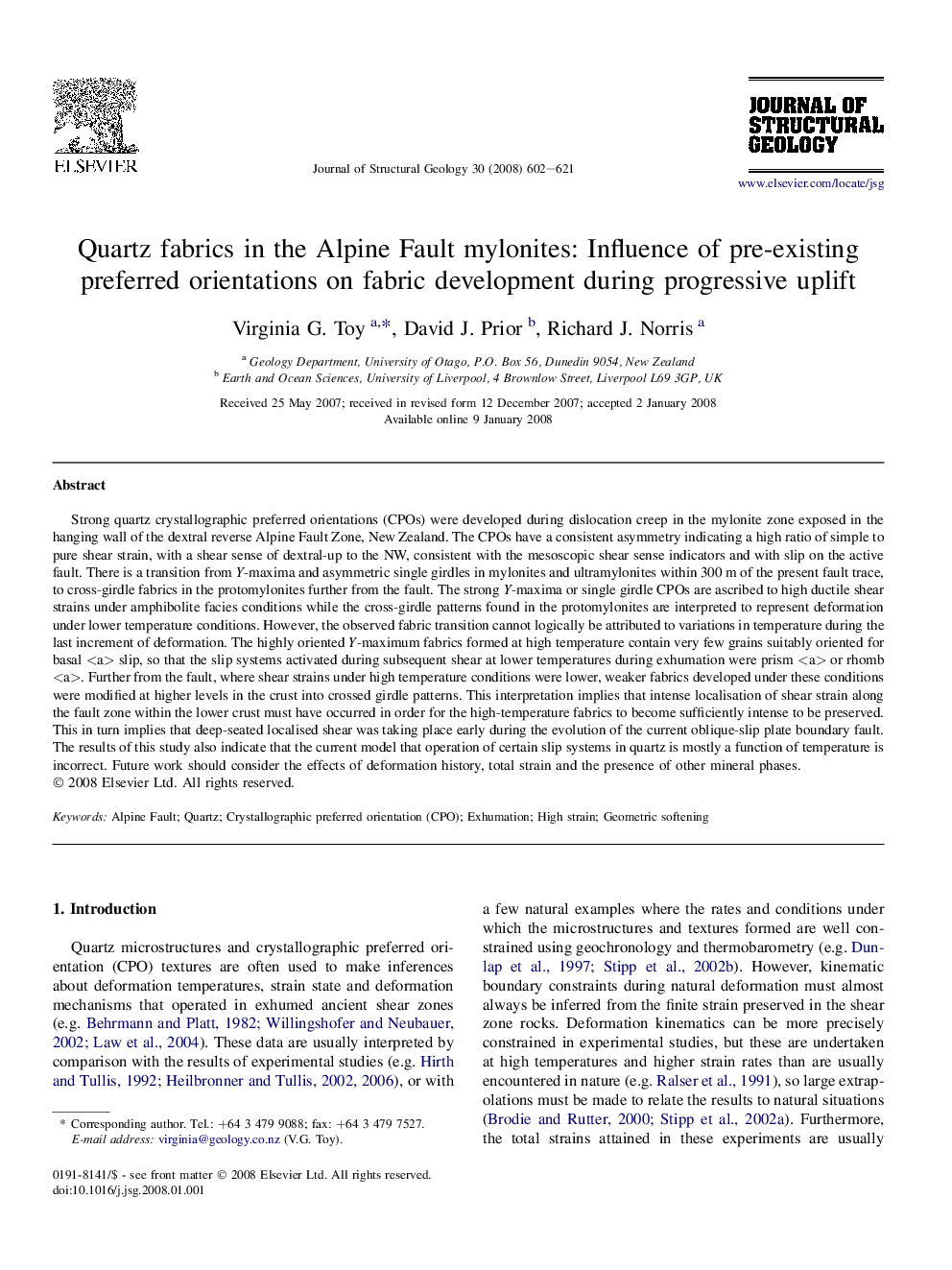| کد مقاله | کد نشریه | سال انتشار | مقاله انگلیسی | نسخه تمام متن |
|---|---|---|---|---|
| 4733752 | 1357049 | 2008 | 20 صفحه PDF | دانلود رایگان |

Strong quartz crystallographic preferred orientations (CPOs) were developed during dislocation creep in the mylonite zone exposed in the hanging wall of the dextral reverse Alpine Fault Zone, New Zealand. The CPOs have a consistent asymmetry indicating a high ratio of simple to pure shear strain, with a shear sense of dextral-up to the NW, consistent with the mesoscopic shear sense indicators and with slip on the active fault. There is a transition from Y-maxima and asymmetric single girdles in mylonites and ultramylonites within 300 m of the present fault trace, to cross-girdle fabrics in the protomylonites further from the fault. The strong Y-maxima or single girdle CPOs are ascribed to high ductile shear strains under amphibolite facies conditions while the cross-girdle patterns found in the protomylonites are interpreted to represent deformation under lower temperature conditions. However, the observed fabric transition cannot logically be attributed to variations in temperature during the last increment of deformation. The highly oriented Y-maximum fabrics formed at high temperature contain very few grains suitably oriented for basal slip, so that the slip systems activated during subsequent shear at lower temperatures during exhumation were prism or rhomb . Further from the fault, where shear strains under high temperature conditions were lower, weaker fabrics developed under these conditions were modified at higher levels in the crust into crossed girdle patterns. This interpretation implies that intense localisation of shear strain along the fault zone within the lower crust must have occurred in order for the high-temperature fabrics to become sufficiently intense to be preserved. This in turn implies that deep-seated localised shear was taking place early during the evolution of the current oblique-slip plate boundary fault. The results of this study also indicate that the current model that operation of certain slip systems in quartz is mostly a function of temperature is incorrect. Future work should consider the effects of deformation history, total strain and the presence of other mineral phases.
Journal: Journal of Structural Geology - Volume 30, Issue 5, May 2008, Pages 602–621